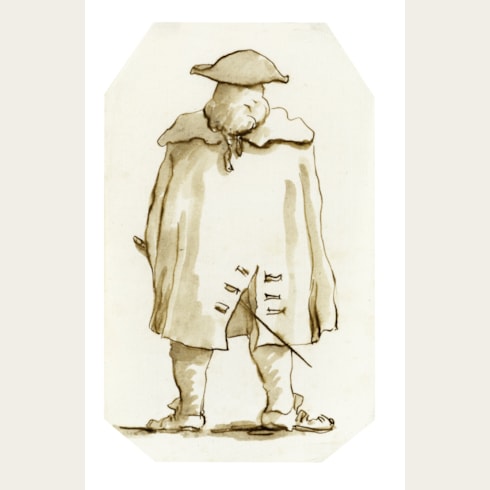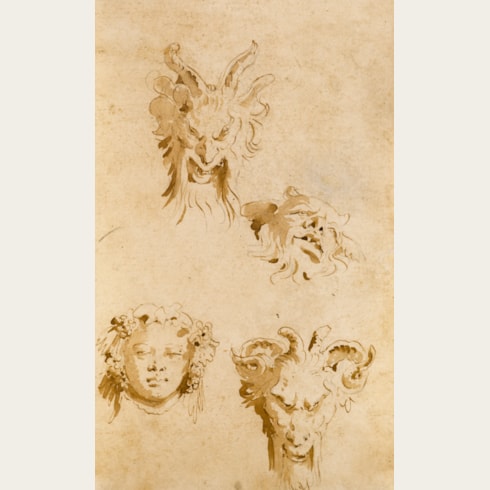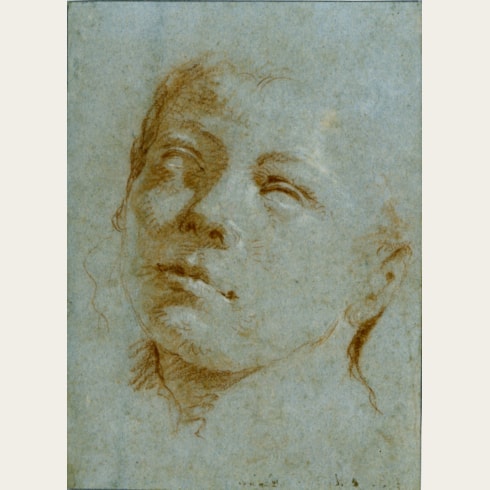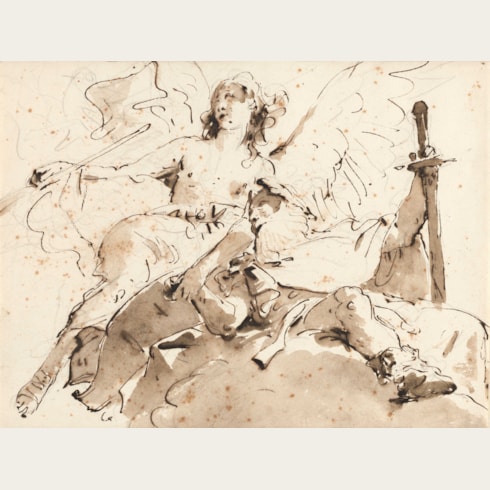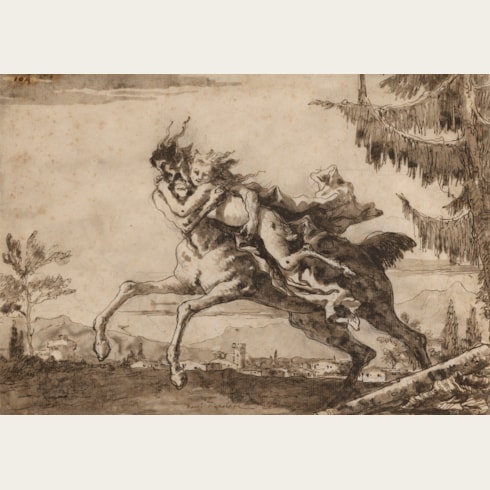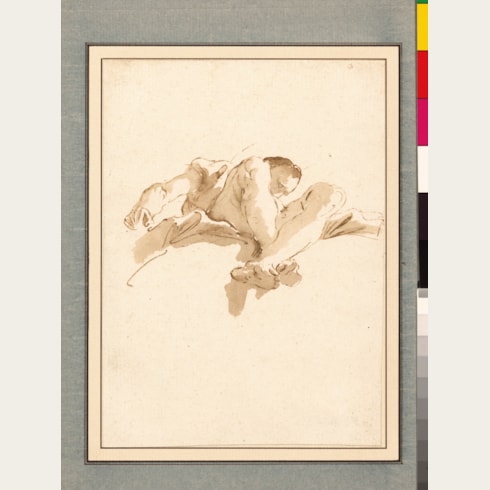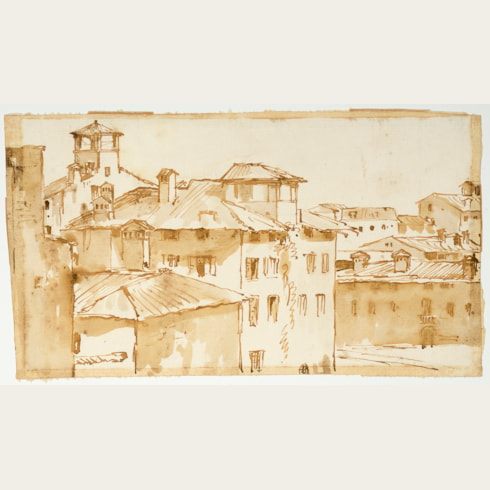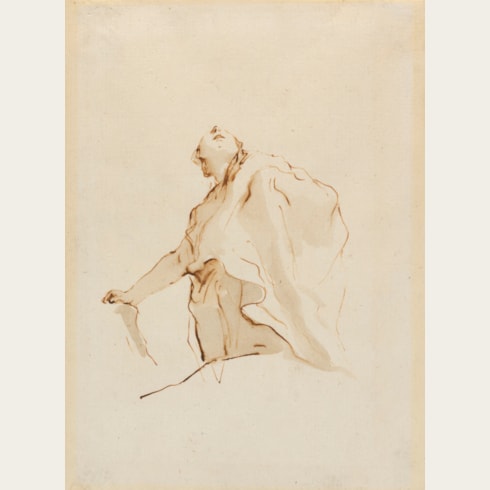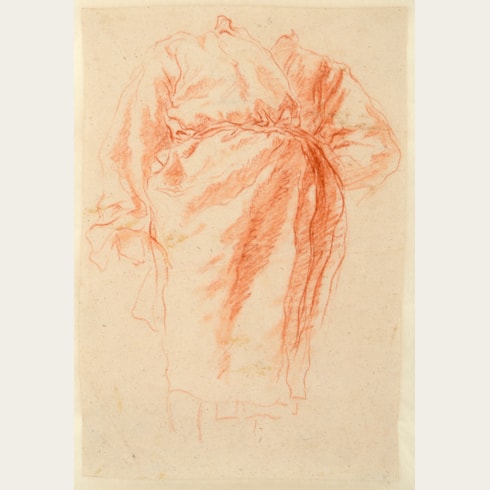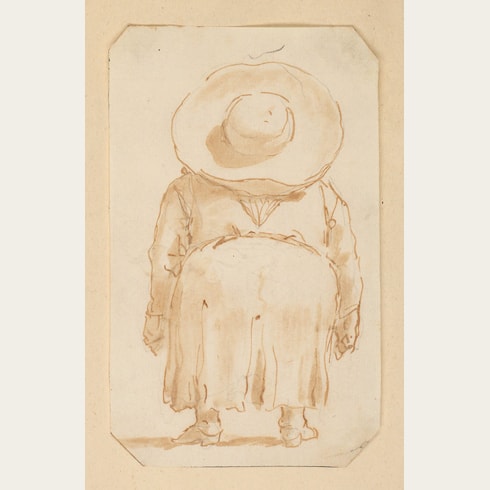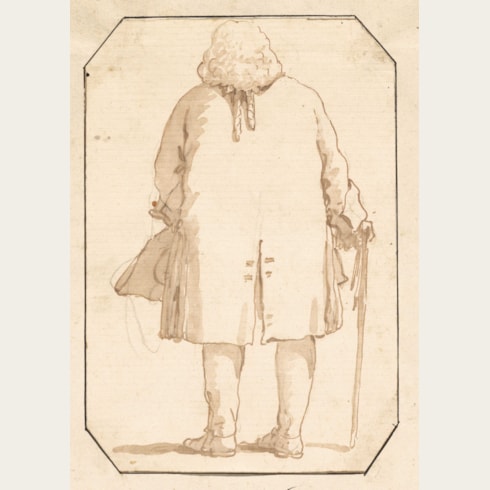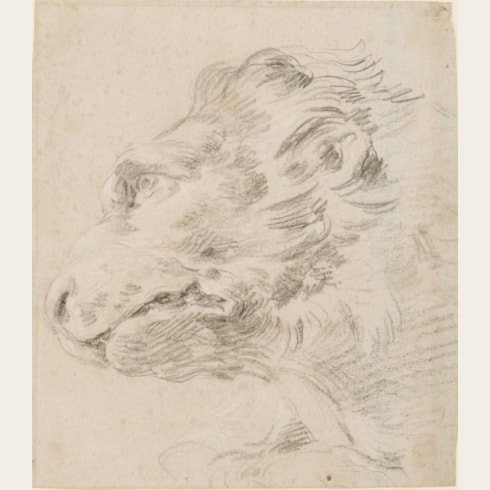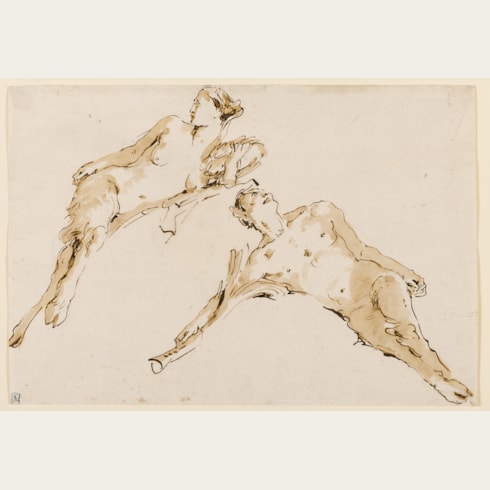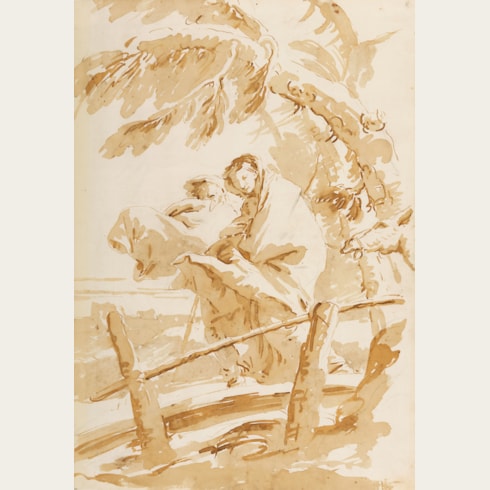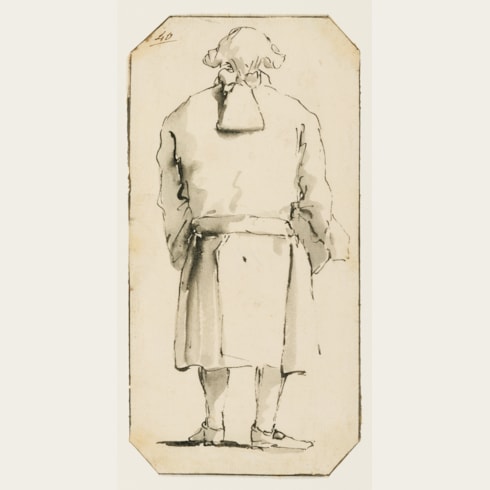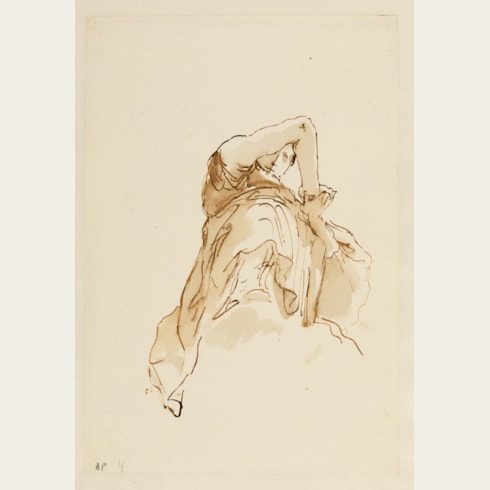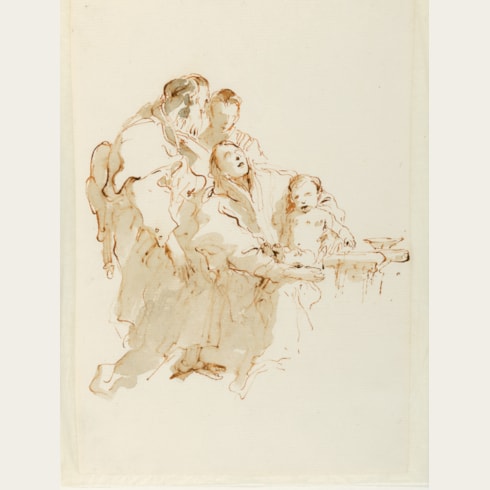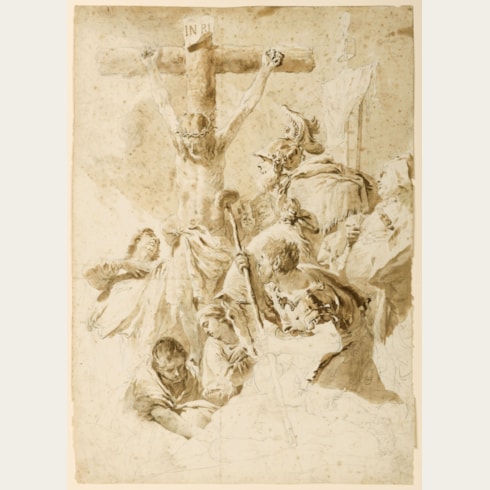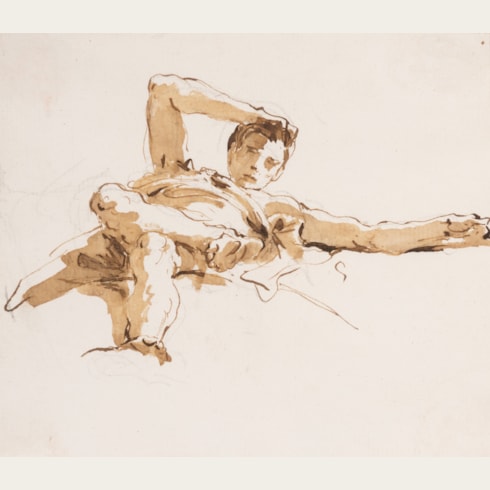Giovanni Battista TIEPOLO
(Venice 1696 - Madrid 1770)
Design for an Elaborate Vase with Allegorical Figures
Several studies of decorative mouldings, numbered between 1 and 18, drawn in black ink over black chalk on the verso.
281 x 202 mm. (11 1/8 x 8 in.)
Datable to the beginning of the 1720s, the present sheet was first published by the scholar Bernard Aikema in 2004. As he wrote, ‘another drawing executed in the hatched pen technique over a sketch in black chalk, again, typical of the early 1720s, shows an ornamental vase, exuberantly decorated with various motifs, including male nudes in various poses…This design for a vase is a rare early example of a subject the artist would return to more often in the 1730s and 1740s.’ Aikema further points out that the large ornamental vase in this drawing is similar to that found in Tiepolo’s monumental canvas of Massiva Before Scipio Africanus of c.1719-1721, today in the Walters Art Museum in Baltimore, Maryland. The decorative motifs and patterns drawn in black ink on the verso of the present sheet can likewise be related to those found on the steps of the base of Scipio’s throne in the same painting. As Aikema suggests, therefore, it would seem reasonable to regard this drawing as a preparatory study for the Baltimore picture.
The nude male figures flanking the vase in this drawing are, as Aikema has pointed out, akin to those found on a sheet of figure studies in pen and ink by the young Giambattista Tiepolo in the Wallraf-Richartz Museum in Cologne. Several drawings of similar decorative vases by Tiepolo, although probably somewhat later in date, are today in the collection of the Museo Civico Sartorio in Trieste.
The leading painter in Venice for much of his career, Giambattista Tiepolo was also undoubtedly one of the finest Italian draughtsmen of the 18th century. That his drawings were greatly admired in his lifetime is confirmed by contemporary accounts; indeed, as early as 1732 the writer Vincenzo da Canal remarked that ‘engravers and copyists are eager to copy his works, to glean his inventions and extraordinary ideas; his drawings are already so highly esteemed that books of them are sent to the most distant countries’. From the late 1730’s until his departure for Spain in 1762, Tiepolo enjoyed his most productive period as a draughtsman, creating a large number of vibrant pen and wash studies that are among the archetypal drawings of the Venetian Settecento. As one recent scholar has commented, ‘From the start of his career [Tiepolo] had enjoyed drawing as an additional means of expression, with equally original results. He did not draw simply to make an immediate note of his ideas, nor to make an initial sketch for a painting or to study details; he drew to give the freest, most complete expression to his genius. His drawings can be considered as an autonomous artistic genre; they constitute an enormous part of his work, giving expression to a quite extraordinary excursion of the imagination; in this respect, Tiepolo’s graphic work can be compared only with that of Rembrandt.’
Tiepolo’s drawings include compositional studies for paintings and prints, drawings of heads, figure studies for large-scale decorations, landscapes and caricatures, as well as several series of drawings on such themes as the Holy Family. Many of these drawings were bound into albums by theme or subject, and retained by the artist in his studio as a stock of motifs and ideas for use in his own work, or that of his sons and assistants.
Provenance
His posthumous sale, New York, Sotheby’s, 30 January 2013, lot 107 Anonymous sale, Paris, Christie’s, 25 March 2015, lot 110.
Literature







